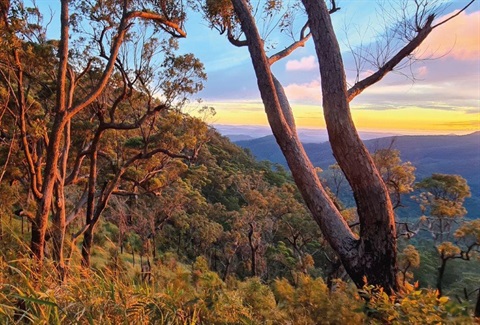Our natural environment

The Rockhampton Region contains a diverse and connected natural environment. It is the productive lands, waterways and habitats that capture or remove pollutants, regulate weather and atmospheric conditions and support our diverse flora and fauna. It also provides us with clean air, water, food and a variety of minerals that sustain our industries and lifestyles and deliver economic, social and cultural benefits to our communities.
Our natural environment fast facts:
- The Rockhampton Local Government Area covers 6,574 square kilometres (km2).
- The Rockhampton Region includes extensive wetlands, creeks and river systems covering some 407km2 or 6% of our total area.
- The Fitzroy River is the region’s major waterway and the largest river catchment flowing to the east coast of Australia.
- As a key natural asset, the river delta and flood plain are considered to be nationally important wetlands. The river is mapped as a Fish Habitat Area and the delta also hosts one of three known populations of the critically endangered Capricorn yellow chat.
- The Region is part of the Lower Fitzroy Catchment, which is part of the broader Fitzroy Basin.
- The Fitzroy River drains to the Great Barrier Reef lagoon.
- The Region is home to broad wooded areas and wetlands including a range of national parks that provide habitat for a diversity of native species.
- The Region showcases natural environmental values and species that are distinctive to the region, including many elements to be celebrated for their intrinsic value and the contribution they make to Queensland’s biodiversity.
- While the Fitzroy River and its tributaries, associated floodplains and delta support alluvial and marine deposits, much of the region’s geological diversity can be found in its elevated areas.
- Mount Archer, located on the Berserker Range, represents the highest point in the region at 608m elevation. Most of the elevated areas within the region are sedimentary rocks along with igneous materials such as granodiorite. Minor areas of recent coastal dune are present at the Fitzroy River delta.
- The Region supports over 1200 native plant species. Native vegetation helps to regulates systems and cycles necessary for a functioning ecosystem (such as water, carbon and nitrogen); assist with soil stabilisation and soil health and provides habitat for native wildlife.
- Broad vegetation groups and varied habitats support over 620 recorded fauna species in the Region. This includes 111 reptile species, 22 frog species, 35 fish species, 359 bird species and 93 mammal species. Of these, 39 species (6%) are thought to be threatened or near threatened or have special conservation significance including the glossy black cockatoo, yellow chat, powerful owl, black-breasted button quail, ghost bat, koala, greater glider, estuarine crocodile, white throated snapping turtle and the Fitzroy River turtle.
Want to find out more about the Rockhampton Region’s natural environment assets, flora and fauna? Take a look at the Queensland Government’s Walking the Landscape map journal.